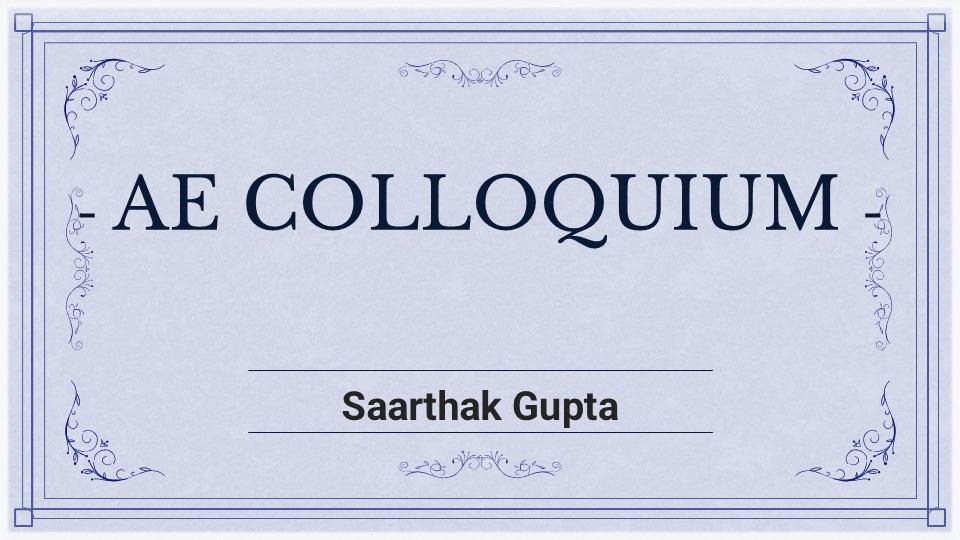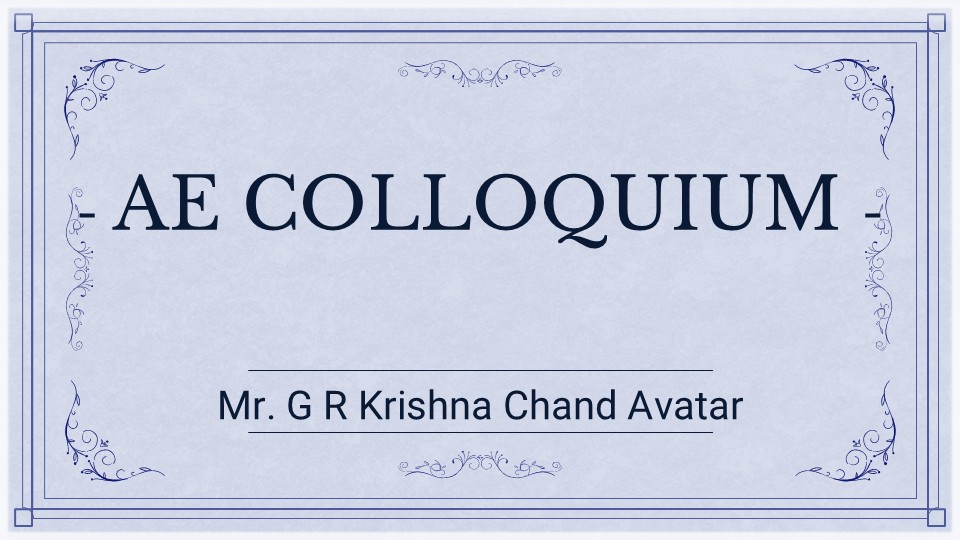
- This event has passed.
Ph.D. (Engg): Passive control and intermittent dynamics of the precessing vortex core oscillation in swirl flows
February 18 @ 4:00 PM - 5:00 PM

Swirl is used in modern gas turbine combustor nozzles to achieve reliable flame stabilization and efficient fuel-air mixing. The swirl component in the nozzle jet flow induces an axial vortex. At high swirl intensities, vortex breakdown occurs, creating a recirculation zone in the flow known as the vortex breakdown bubble (VBB). VBB appearance is typically accompanied by the emergence of a global self-excited instability where the VBB precesses around the flow axis and causes the axial vortex to form a co-precessing helical structure. This instability is referred to as the precessing vortex core (PVC). Several prior studies have shown that the PVC oscillation can significantly impact emissions and thermoacoustic stability characteristics of the combustor. This thesis studies the characteristics and passive control of the PVC. The non-reacting flow field in an axial entry swirl nozzle combustor at the Massachusetts Institute of Technology (MIT), USA, is investigated. Planar three component time resolved velocity field measurements in the combustor for combinations of two swirl numbers, S = 0.67 and 1.17 and centrebody diameters of Dc = 9.5 mm, 4.73 mm and 0 mm (i.e. no centrebody) are analysed. All cases are at a fixed bulk Reynolds number of 20,000. A new modal decomposition method based on wavelet filtering and proper orthogonal decomposition (WPOD) is developed in this thesis to analyze the global non-stationary dynamics of these flows. WPOD analysis for configurations without a centrebody for both swirl conditions revealed a coherent PVC oscillation in the flow. Large eddy simulation (LES) is performed for configurations without the centrebody and with the Dc = 9.5 mm centrebody for both swirl numbers. For all four cases, LES accurately captures flow statistics and PVC characteristics observed in the corresponding experimental measurements. Linear stability analysis (LSA) on the time averaged flow for each value of S in the configuration without a centrebody yields a nearly neutrally stable global mode whose oscillation frequency and spatial flow oscillation amplitude distribution characteristics match those induced by the PVC in each case. The wavemaker region associated with the PVC mode is shown to be situated at the upstream end of the VBB on the flow centreline. Therefore, the introduction of a centrebody disrupts the wavemaker and suppresses the PVC as the experiments verify. In both LES and experimental studies for the cases with the Dc = 9.5 mm centrebody, low amplitude PVC like oscillations, which are also intermittent in the S=0.67 case, are observed. Resolvent analysis (RA) for helical forcing on the time averaged flow field from LES for these cases is performed. RA reveals a low rank, optimal helical mode pair at frequencies where PVC like oscillations are observed. The output mode amplitude distribution characteristics match those of the PVC like oscillations at both values of S. For the S=0.67 case, the input mode structure suggests that intermittent separation between the centrebody wake and the VBB, due to turbulence results in the startup of PVC oscillations, which subsequent merger then suppresses. For the S=1.17 case, the input mode structure shows that stochastic forcing of the flow by turbulence, generated by vortex shedding off the upstream swirler, results in sustained PVC like oscillations due to a low-rank strongly amplified flow response at the PVC frequency revealed by resolvent analysis.
Speaker: Saarthak Gupta
Research supervisor: Prof. Santosh Hemchandra
